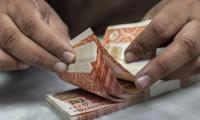What will be the shape of Pakistan when it emerges out of the pandemic? How long will Covid take and how will Pakistan be able to ride the wave?
What will be the future of the GDP that has already been impacted? Has the government’s response been effective in mitigating the spread of the virus? Among many others, these are some of the questions that are on the mind of every sensible Pakistani, whose very survival is dependent on them.
South Asia that had relatively escaped the first Covid wave has been hit harder than most countries that were affected the first time round, since the pandemic started seriously in March 2020. India had initially claimed to have enough vaccines for its population, but it couldn’t render the vaccine to the infected and it ran out of ventilators long ago. Similarly, Pakistan was already struggling with low vaccine doses, and ventilators but then alarmingly even oxygen became scarce.
The spike in Covid in March/April 2021 has been devastating for the country with a daily infection rate of ten percent with as high as 25 percent in some main cities. Concerningly, these numbers were said to be grossly understated. Most people don’t even go to a hospital when infected and many may even be in denial that they have Covid, especially in backward areas.
The government not only thought that it had ridden the hard wave of the virus when mostly it surfaced unscathed from the virus toward the end of 2020 but it was also found off-guard to deal with the unexpected increase of the virus and hadn’t placed any contingency plans for any emergency conditions.
Prime Minister Imran Khan was proud of the effectiveness of smart lockdowns and how they had received recognition across the world and allowed Pakistan to curtail the spread of the virus to a large extent but what he failed to factor in the equation was the previous year’s low infection rate and for reasons unknown so far, how the country had mainly escaped a major impact of the virus, unlike many other nations.
Instead of cordoning off entire areas, smart lockdowns allow people to move through areas in certain hours; initial smart lockdowns also allowed gatherings like weddings and other social events to continue – with lower numbers. People ended up manipulating the conditions of the smart lockdown, where instead of having 300 people at a wedding outdoors, wedding halls had considerably more people that resulted in the faster spread of the virus. Further, limited hours of restaurants and shopping malls and closure on weekends built more crowds in the permitted hours. Only a handful of arrests were made, and provincial administrations weren’t able to enforce SOPs with these conditions.
Besides the self-proclaimed victory and apart from a couple of international entities’ recognition without any solid statistics and evidence, there’s no evidence that the smart lockdown achieved its intended purpose. If anything, it should have been a lesson for the government, where the approach to handling Covid should have been reviewed and a strategy aligned with Pakistan’s ground realities of cultural, religious values and people’s mindset adopted.
Which is why, when hit with the massive Covid infection onslaught in March/April 2021, the government was in a significantly difficult position to manage the crisis. Instead of mitigating the startlingly high infection rate, the government reverted to its previous policy of smart lockdowns, and was initially indecisive about how to control the spread of the virus. Further, while other nations were still focusing on prevention and treatment measures, Pakistan diverted its efforts from developing a vaccine, increasing tests, and enforcing strict mask usage.
From the lessons learned from the past pandemics, and how nations that have effectively responded to the coronavirus, there are two practical measures: either adopt the herd immunity concept (worked for the Spanish flu) by allowing the virus to take its toll; or run a strict lockdown policy by restricting people’s movement and closing the borders. The former may not be practical in the case of Covid, as none of the nations that have managed to curtail the virus have adopted the measure. The latter measure seems to be more effective as experienced in the case of China, New Zealand, South Korea, Liberia, Senegal, Uganda. All these countries had vigorous testing, closed their borders, and had broad-scale quarantining.
The problem in Pakistan is magnified due to a lack of education, social values, and misapprehended religious and cultural idioms. The nation has two main classes when dealing with Covid – the minority, educated, affluent urbanites that mostly adhere to the preventive measures; and the poor, majority, rural area dwellers, that mostly don’t follow the preventive measures and may even believe that the virus is a hoax, created by the West, as a conspiracy to damage them.
Further, the problem is multiplied when most of these people are on daily wages and can’t afford quarantine. It’s a simple choice for them, either stay home and die of hunger or go out and be affected by Covid and may have a chance to live. The choice they opt for is simple.
The country must revisit its strategy of handling the virus – and soon. By no means are conditions in Pakistan easy to fight Covid-19 but these are hard times that call for hard measures. The government must revisit its approach, involve more stakeholders at the ground level, and bring in the clergy to enlighten people about Covid. The teachings of the Prophet (pbuh) need to be better conveyed when about 1400 years ago he told people not to leave or enter pandemic-affected areas.
The writer is a finance/economics professional.
Email: usman.arbab@gmail.com
An aeroplane of the national flag carrier of Pakistan is seen in this file photo. — AFPWhile Pakistan considers...
Representational image of a graph depicting various variables. — APP/FileInitiated by the centre and fiercely...
In this picture taken on April 16, 2023, people throng a market area during shopping in Lahore. — AFPOne of the...
Honour crimes also target men. In Sikandar Ali Lashari vs The State, SHC upheld conviction passed by ATC for honour...
If Sindh earmarks Rs20 million per police station, it will cost only Rs10 billion to make them effective first...
A complex and difficult policy environment seems to be highlighted by US’s recent application of sanctions on...







